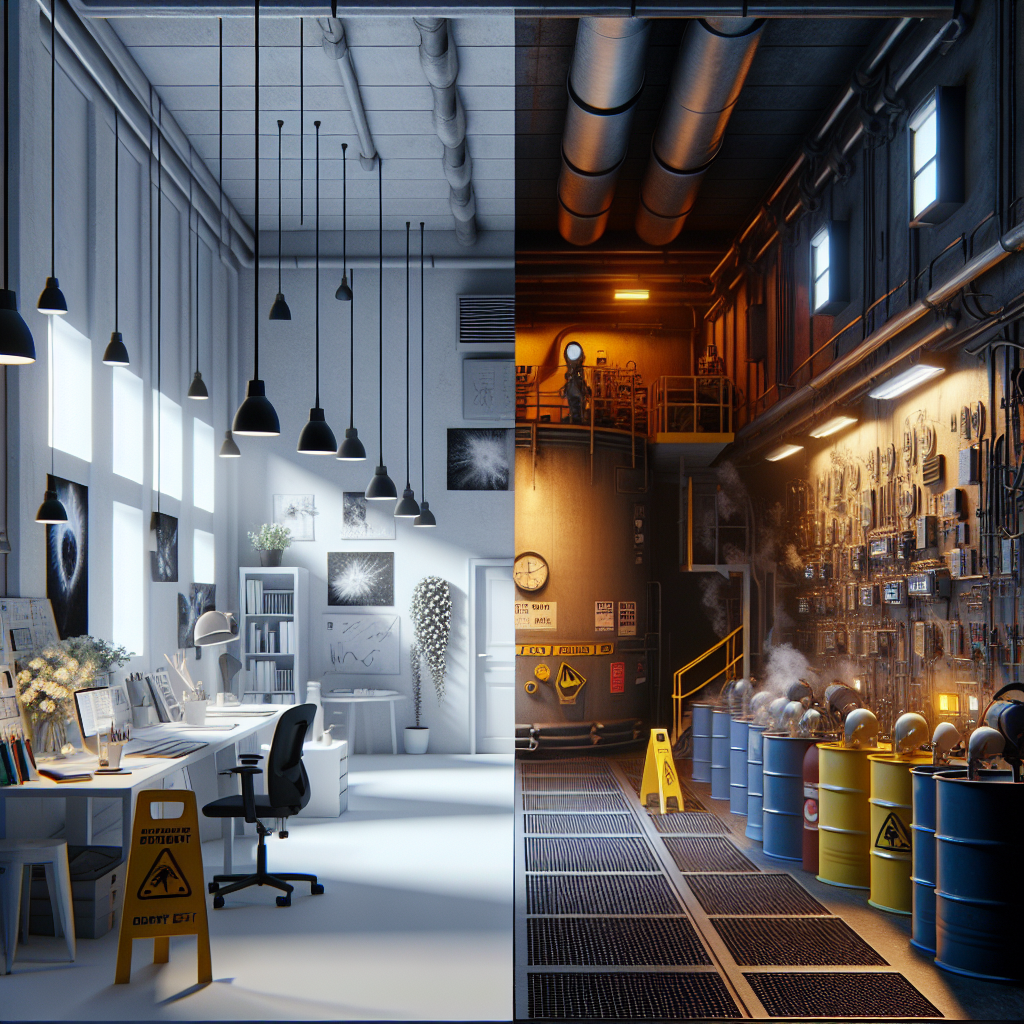
Understanding Confined Spaces
Confined spaces are tangible realities in the workplace, but they can be as dangerous as a roaring lion in a small cage. These areas allow for entry but often come with restrictions that can turn a simple task into a safety nightmare. They’re spaces that restrict movement and pose potential risks to the workers inside them.
According to OSHA, a confined space is defined as a location that is large enough for a person to enter and perform work but is not designed for continuous human occupancy. Picture a deep, dark well: while there may be enough room to enter, it’s hardly a place for people to linger.
Regulatory standards lay out the definition and criteria for these confined spaces, highlighting their potential hazards and the importance of recognizing them for workplace safety and health. As safety professionals, understanding confined spaces isn’t just about knowing the rules—it’s about protecting lives.
Definition of “Designed for Continuous Human Occupancy”
When we delve into what qualifies as being “designed for continuous human occupancy,” think of it as the difference between an artist’s studio and a storage closet. Spaces like offices, meeting rooms, and living facilities are intentionally designed for people to occupy continuously.
Compliance with established codes and standards becomes crucial in these environments. Much like building a solid ship for travel, the design must ensure structural integrity, adequate space, and facilities necessary for daily activities.
Ventilation and air quality control play vital roles here. Imagine being stuck in a stuffy room without windows; that’s the kind of predicament we must avoid. Spaces intended for human occupation should have proper airflow to promote health and well-being.
Moreover, a well-designed human-occupied space incorporates safety features such as sufficient egress and emergency exits. Just like how an escape route is a lifeline during emergencies, these features ensure that in case of an anomaly, individuals can evacuate swiftly.
Characteristics of Spaces Not Designed for Continuous Human Occupancy
Now, let’s shine the spotlight on spaces that are not designed for continuous human occupancy. Think of tanks, silos, or pits—they’re structured with a primary goal: managing materials, not human beings.
These areas often contain hazardous materials or conditions unsuitable for human safety. Imagine a dark, damp pit filled with unknown substances—that’s not a party I’d like to be invited to! The potential for exposure to toxic chemicals or extreme conditions makes these spaces particularly risky.
Moreover, limited or non-existent ventilation features are common deterrents for human occupancy in these confined spaces. Think of them as a sealed envelope—without proper air circulation, they can become a trap.
Additionally, spaces not designed for human occupancy lack provisions such as lighting and access routes. Just as a ship without a compass is lost at sea, working in these poorly constructed environments is a gamble with safety.
In essence, these structures serve a function related to equipment or materials rather than people, positioning them distinctly away from the realm of continuous human occupancy.
Regulatory Implications of Confined Spaces
Understanding the regulatory implications of confined spaces is akin to navigating a complex maze. Spaces not designed for continuous human occupancy may fall under the regulations of Permit-Required Confined Spaces (PRCS). This classification triggers a web of strict safety protocols.
PRCSs are subject to rigorous requirements due to potential hazards present. Important regulations include atmospheric monitoring, which is akin to checking the weather before a long journey. Safety personnel must be on standby to oversee works within these spaces, ensuring prompt action if there’s an issue.
Before entering a permit-required confined space, written safety permits are necessary—this is like getting a VIP pass before entering an exclusive club. It ensures that all safety measures are taken into account.
Furthermore, an emergency response plan must be developed and practiced for confined space situations. Just as firefighters train for diverse emergencies, workers must know what to do in case of an incident. Regular drills can be life-saving!
Conclusion: Importance of Recognizing Space Design
In conclusion, understanding the design of spaces is critical for workplace safety and compliance. Recognizing the differences between spaces designed for occupancy versus those that aren’t can save lives.
Educating employees about the hazards associated with confined spaces is essential. Just as travelers learn to read maps, workers need to be well-versed in their surroundings and the risks involved.
Implementation of safety measures should be part of the company culture to prevent accidents and ensure health standards are met. Continuous training and awareness are vital for maintaining safety in industrial settings.
Unlocking the mysteries of what it means to be “designed for human occupancy” is the first step toward creating a safer workplace. Whether you’re an OSHA safety professional or an AI enthusiast, tracking these definitions will keep safety at the forefront of your operations.